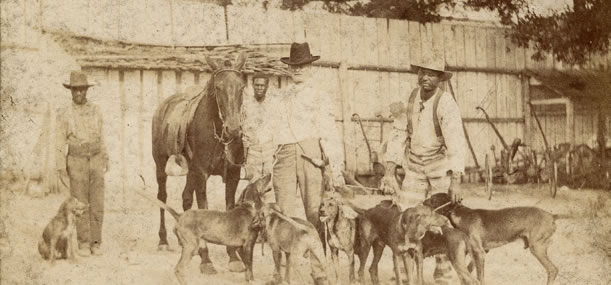St. Louis Post-Dispatch, March 23, 2008
“Slavery by Another Name” is a formidably researched, powerfully written, wrenchingly detailed narrative of the mistreatment of millions of blacks in America, mistreatment that kept African-Americans in shackles of the body and mind long after slavery had officially ended.
By Harper Barnes
In March 1908, an unemployed black man named Green Cottenham was arrested in Alabama and found guilty of the vague charge of vagrancy.
Unable to pay exorbitant fines and fees that accompanied the conviction, he was sentenced to a year at hard labor and “sold” to a mining subsidiary of U.S. Steel, which agreed to pay his debts in return for his services and sent him in chains into a coal mine.
There, as Douglas A. Blackmon writes in his groundbreaking “Slavery by Another Name,” Cottenham and more than a thousand other black men “toiled under the lash.” In the mines of northern Alabama, “convict slaves” were beaten viciously, shackled to their beds at night and literally worked to death. In 1908 alone, almost 60 convict slaves died in the mine where Cottenham labored.
The story of Green Cottenham, his ancestors and his family’s descendents form the central thread of Blackmon’s extraordinary book. The writer, Atlanta bureau chief of the Wall Street Journal, weaves a horrifying tale of Southern convict labor policies that perpetuated slavery for almost a century after the Emancipation Proclamation.
Almost as soon as the Civil War ended, powerful white politicians, plantation owners and industrialists began reinstituting slavery through laws intended “to criminalize black life,” Blackmon writes.
Countless thousands of blacks were arrested on the flimsiest of charges, thrown into jail and, in effect, sold to plantations, railroads, mines, factories, mills and lumber camps.
In addition, millions of blacks, if they wanted to work, were forced to do so under labor contracts that prevented them from leaving without written permission from their employers. Many of these men and women were also treated like slaves, subject to the harshest discipline.
Blackmon focuses on Alabama, which, between the Civil War and the early 20th century, “eviscerated black citizenship more completely and enthusiastically than any other” state, not only through convict labor policies but by denying blacks access to education, voting and other benefits of citizenship.
But he does not spare the rest of the Deep South in his blistering indictment. This is an important book, uncovering decades of crimes that helped prevent African-Americans from advancing in American society.
In 1903, a federal investigation of the convict labor system in Southern states, spurred by President Theodore Roosevelt, revealed what Blackmon describes as “peonage and involuntary servitude of the most vicious character.”
A few white men were convicted of violating federal laws, but in a couple of years, after the furor had died down, the convict labor system resumed across the South.
By 1930, at least one state, Georgia, “had more forced labor slaves than ever,” he writes. The use of labor on farms and in factories and mines as well as onerous employment contracts that were tantamount to slavery continued in some parts of the South until well into the 1940s.
“Slavery by Another Name” is a formidably researched, powerfully written, wrenchingly detailed narrative of the mistreatment of millions of blacks in America, mistreatment that kept African-Americans in shackles of the body and mind long after slavery had officially ended.
The decades of “re-enslavement,” Blackmon argues, must be taken into account when trying to assess the damage done to African-Americans by centuries of involuntary servitude.
“Certainly, the great record of forced labor across the South demands that any consideration of the progress of civil rights remedy in the U.S. must acknowledge that slavery, real slavery, didn’t end until 1945,” he writes.
—Harper Barnes is the author of Never Been a Time, a history of the 1917 East St. Louis race riot to be published in June by Walker & Co.


Share this post